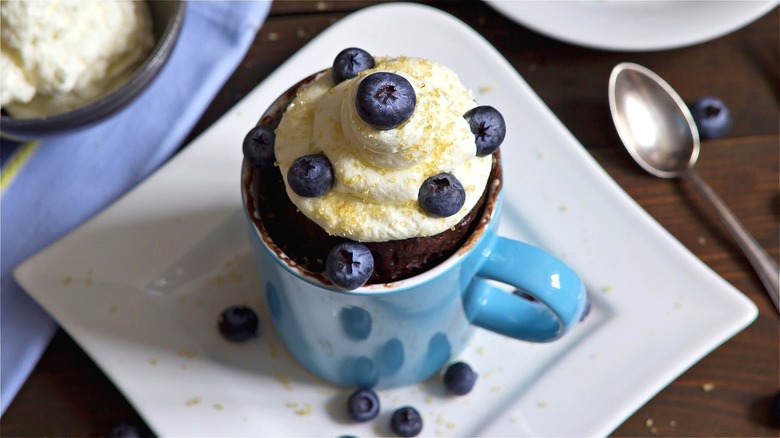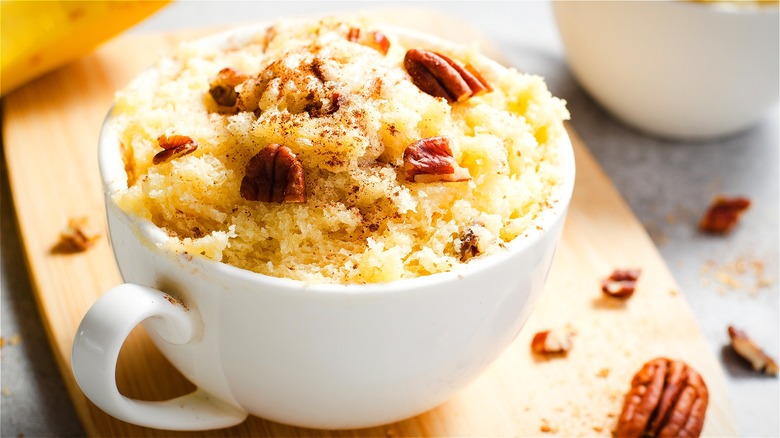For The Best Mug Cake, Don't Make This Topping Mistake
If you're a fan of simple and delicious desserts, there's surely a special place in your heart (and stomach) for easily-assembled mug cakes. For those rare occasions you can't muster the energy required to make chocolate chip cookies or a simple sheet cake, mug cakes are astoundingly simple to put together and, more often than not, take less than a few minutes to cook. Yet, compiling this delicious dessert in such a small amount of time might trick you into thinking all mug cake recipes are completely foolproof. As it turns out, to achieve ultra-satisfying results each and every time, use discretion when applying extras to this simple treat. More specifically, cook mug cakes before adorning them with your favorite toppings.
While some might assume the best microwaveable mug cake recipes are merely simplified versions of traditional layer cakes, the cooking process alone sets the former apart by a long shot. Ovens have versatility in temperature, which gives them the ability to brown, caramelize, and crisp food, while microwaves cook with speed that produces a high base temperature through electromagnetic radiation. Microwave's high-heat technology often causes a steaming effect, which can be a detriment to certain foods. To create the perfect mug cake, only add certain toppings once this convenient dessert has been adequately cooked. Since there are so many mug cake recipes to choose from, there are also a lot of potential toppings that may or may not produce the best taste and texture once blitzed in the microwave.
How to make delicious mug cakes with a range of toppings
Whether you're making a double chocolate mug cake or a variety with vanilla and sprinkles, your microwave doesn't cook individual mug cakes in the same manner as a traditional oven. Due to the compact nature of mug cakes, these fast-cooking desserts often result in an extra soft consistency from the steam emitted throughout the cooking process.
More often than not, mug cakes are dressed in toppings to give this dessert a veritable crunch or contrasting bite. Chopped nuts, candy bars, potato chips, and graham crackers are all possible options for delicious, award-winning mug cakes. Yet, unlike ovens which use hot air to evenly cook food, microwaves heat food from the outside in, stimulating activity and eventually heating the water molecules within the wet components of your food.
Inevitably this internalized pressure produces steam which, in turn, changes the texture of crunchier toppings. For example, if you add nuts to your mug cake prior to cooking, you'll most likely end up with a steamed topping that lacks definitive texture. For the best results, add these roasted snacks once your microwaveable cake has cooled. If added too soon, weightier toppings also run the risk of sinking within your cake's batter. To create sweet and fluffy mug cakes with your favorite toppings, play it safe and save any crunchy ingredients for a well-rounded finishing touch.

